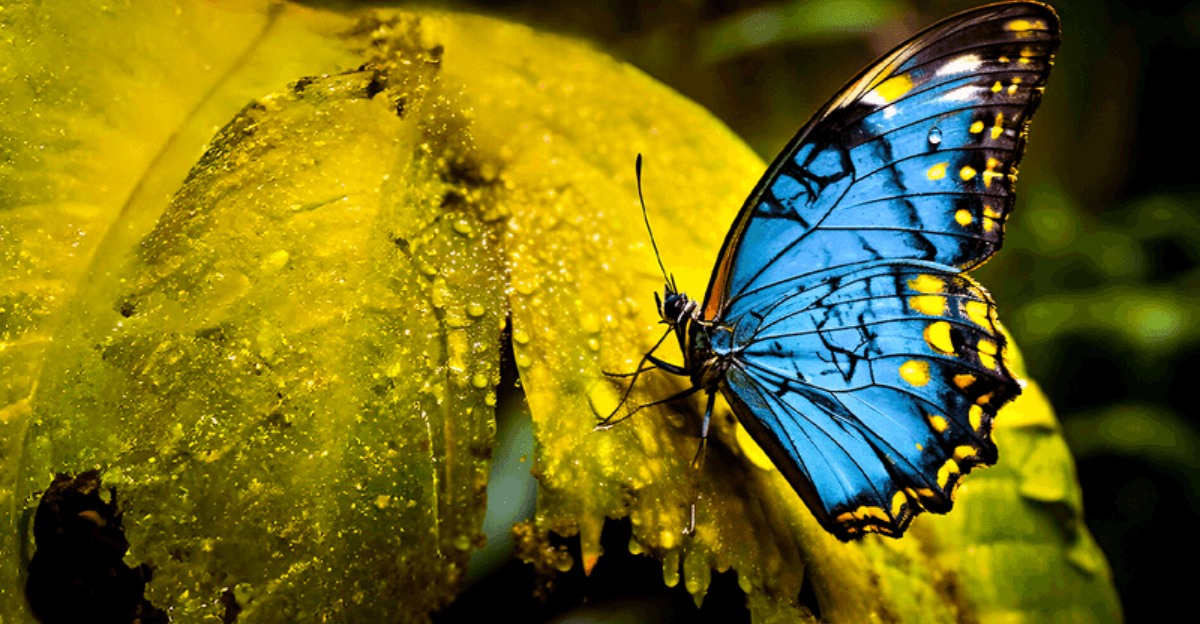Butterflies are often considered the jewels of the insect world, with their vibrant colors and delicate wings. While many people are familiar with common species like the Monarch or the Painted Lady, there exists a realm of rare butterflies that few have had the privilege to behold.
These hidden treasures of nature are not only beautiful but also play crucial roles in their ecosystems. Let’s explore 12 of these extraordinary butterflies, each with a unique charm that sets them apart from their more common relatives.
1. Palos Verdes Blue
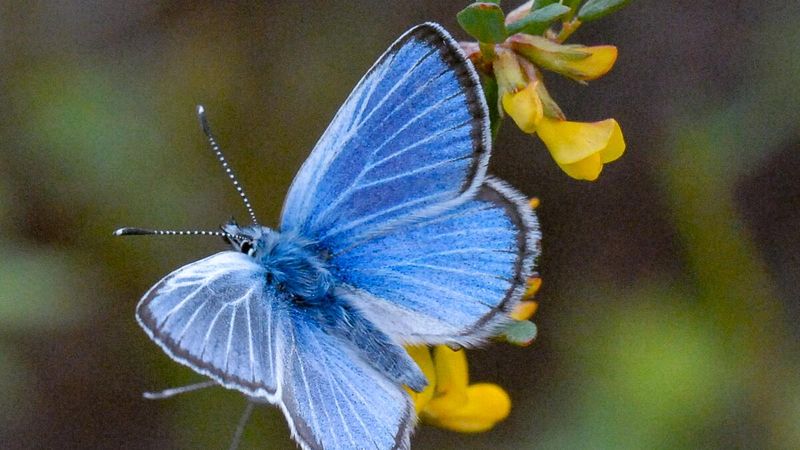
Tucked away in the coastal regions of California, the Palos Verdes Blue is a rare gem. This butterfly, with its striking azure wings, finds its home in the Palos Verdes Peninsula, where it flutters among the coastal buckwheat shrubs. Its survival is closely linked to this plant, making conservation efforts crucial.
The Palos Verdes Blue faced near extinction due to habitat loss. Fortunately, dedicated conservationists have worked tirelessly to revive its population.
Efforts include habitat restoration and captive breeding programs. The butterfly’s story is a testament to the power of human intervention in preserving nature’s treasures.
Witnessing this butterfly in its natural habitat is a true privilege. Its presence is a reminder of the delicate balance within ecosystems and the importance of protecting these environments for future generations.
2. Schaus’ Swallowtail
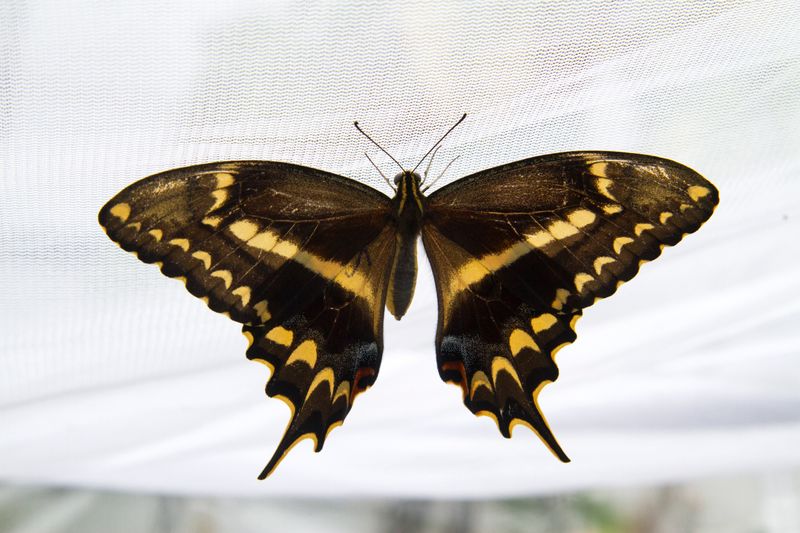
In the vibrant landscapes of the Florida Keys, Schaus’ Swallowtail flits gracefully among the tropical foliage.
This butterfly, with its bold black and yellow pattern, embodies the tropical beauty of its home. It thrives in hardwood hammocks, where it feeds on nectar from a variety of flowers.
Once on the brink of extinction, this swallowtail has bounced back thanks to intensive conservation efforts. Conservationists have focused on preserving its habitat and mitigating threats from urbanization and climate change. Such efforts highlight the butterfly’s resilience and the critical role of conservation.
3. Purple Emperor
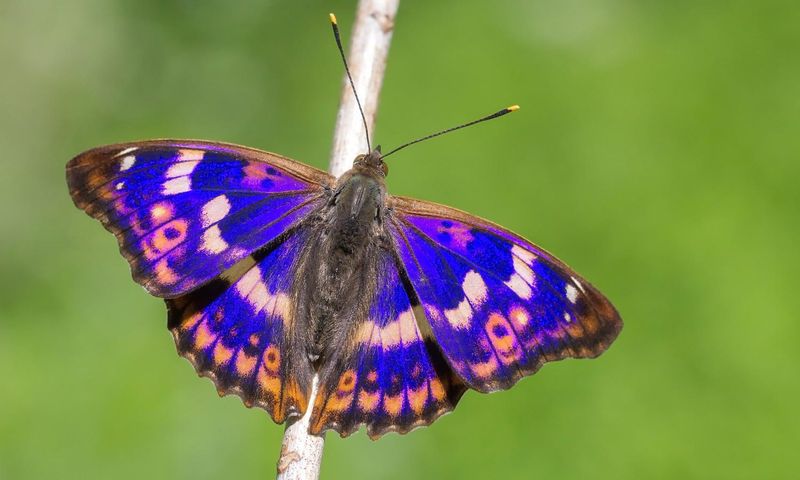
The Purple Emperor is a majestic butterfly, often considered royalty in the world of Lepidoptera. Found primarily in the deciduous forests of Europe, it is renowned for its striking, iridescent purple wings. These wings catch the sunlight beautifully, creating a dazzling display.
Unlike many butterflies, the Purple Emperor prefers to stay high in the tree canopy. It feeds on aphid honeydew and tree sap rather than flowers.
This unique diet and behavior make encounters with the Purple Emperor a rare and memorable event for butterfly enthusiasts.
4. Himalayan Golden Birdwing
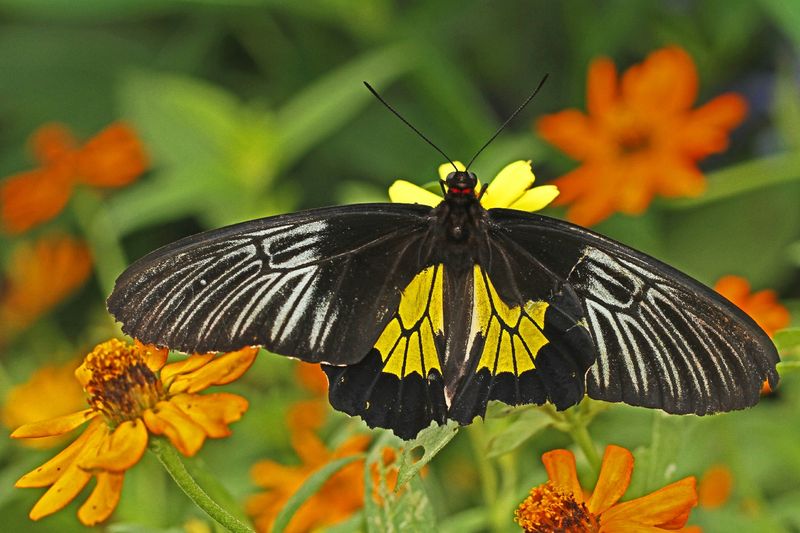
High in the Himalayan mountains, the Golden Birdwing flutters elegantly across the alpine meadows. This butterfly is notable for its large size and vibrant golden-yellow wings, which stand out against the backdrop of snow-capped peaks.
The Himalayan Golden Birdwing is one of the largest butterflies in the world. Its impressive wingspan and striking color make it a sought-after sight for nature lovers. This butterfly’s habitat is often remote, making encounters both rare and cherished.
Conservationists are keen to protect this butterfly’s alpine environment. Climate change poses a significant threat, highlighting the need for ongoing efforts to preserve these unique high-altitude ecosystems. The Golden Birdwing is a reminder of the beauty and fragility of nature’s wonders.
5. Chilean Blue
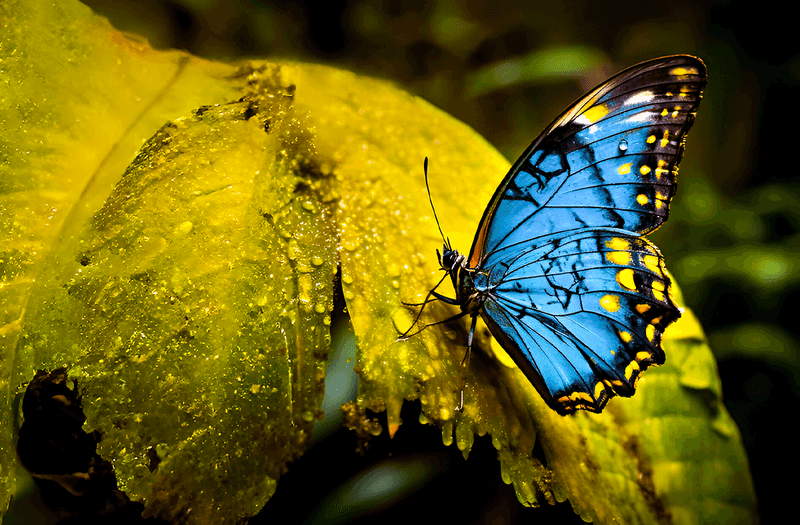
Deep within the temperate forests of Chile, the Chilean Blue adds a splash of color to the lush greenery. This small butterfly is known for its brilliant blue wings that shimmer in the dappled sunlight. Its habitat is primarily in the southern regions, where it thrives in the mild climate.
The Chilean Blue faces threats from deforestation and habitat fragmentation. Conservation programs aim to protect its natural environment and ensure this species continues to dazzle in its native forests. These efforts are crucial for maintaining the biodiversity of the region.
6. African Giant Swallowtail
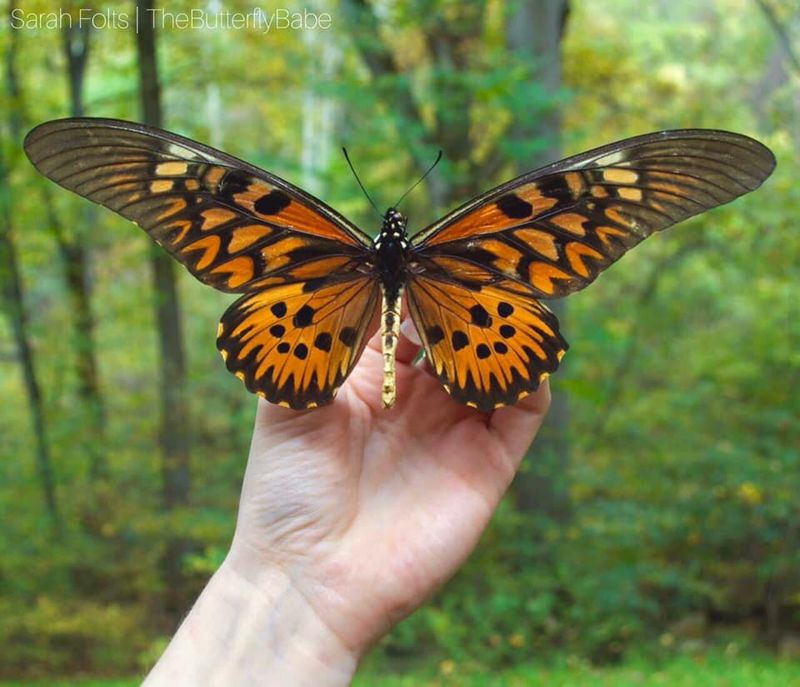
The African Giant Swallowtail is a butterfly of remarkable size and beauty, gracing the landscapes of Africa’s savannas. Its bold black and yellow pattern is a striking sight against the golden savanna grasslands. This butterfly is among the largest in Africa, capturing the attention of all who see it.
Preferring open woodlands and forests, it plays a role in pollination, thus contributing to the ecosystem. Its impressive wings help it to cover large distances in search of food. Despite its size, the African Giant Swallowtail faces challenges from habitat loss and environmental changes.
7. Emerald Swallowtail
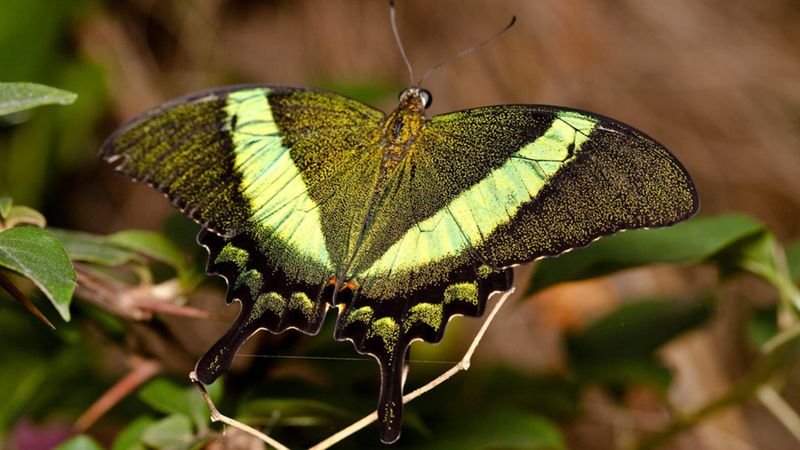
The Emerald Swallowtail is a stunning butterfly with iridescent green wings that shimmer in the tropical rainforests of Southeast Asia. Often found flitting through the dense foliage, this butterfly is a true marvel of nature’s artistry.
Its vibrant coloration is not just for show; it plays a role in camouflage among the lush greenery. The Emerald Swallowtail is an adept flyer, navigating the humid and complex environments of the rainforest with ease. Its presence is a testament to the rich biodiversity found in these ecosystems.
Conservation efforts are vital to protect the Emerald Swallowtail’s rainforest habitat. Deforestation poses a significant threat, emphasizing the need for sustainable practices. This butterfly serves as a reminder of the intricate beauty of nature and the importance of preserving it for future generations.
8. Madagascan Sunset Moth
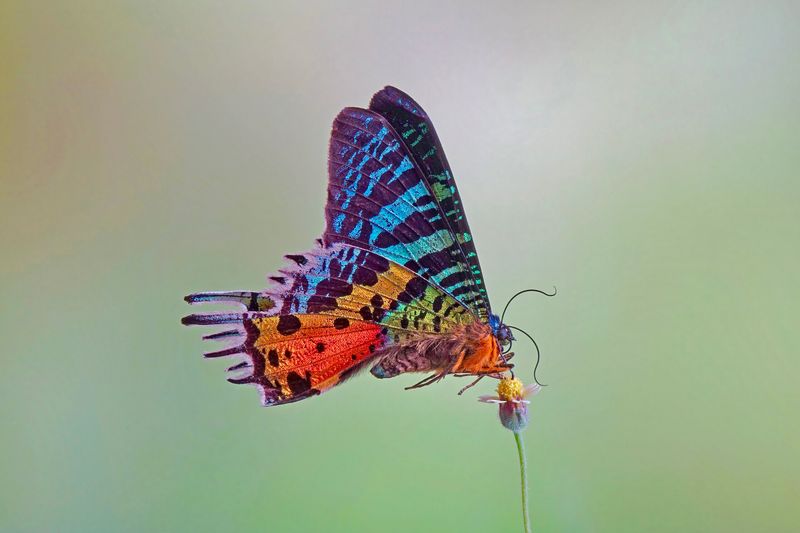
Though technically a moth, the Madagascan Sunset Moth is often mistaken for a butterfly due to its vibrant colors. Found exclusively in Madagascar, it is celebrated for its striking red, yellow, and green patterns that rival any butterfly.
The moth’s beauty is matched by its ecological significance. It plays a vital role in pollination, flitting among the island’s unique flora. Its wings’ iridescence is a result of microscopic structures rather than pigments, adding to its allure.
Conservationists focus on preserving Madagascar’s unique habitats to ensure the survival of this and other endemic species. The Madagascan Sunset Moth is a symbol of the island’s unique biodiversity and the need for continued conservation efforts to protect these natural wonders.
9. Queen Alexandra’s Birdwing
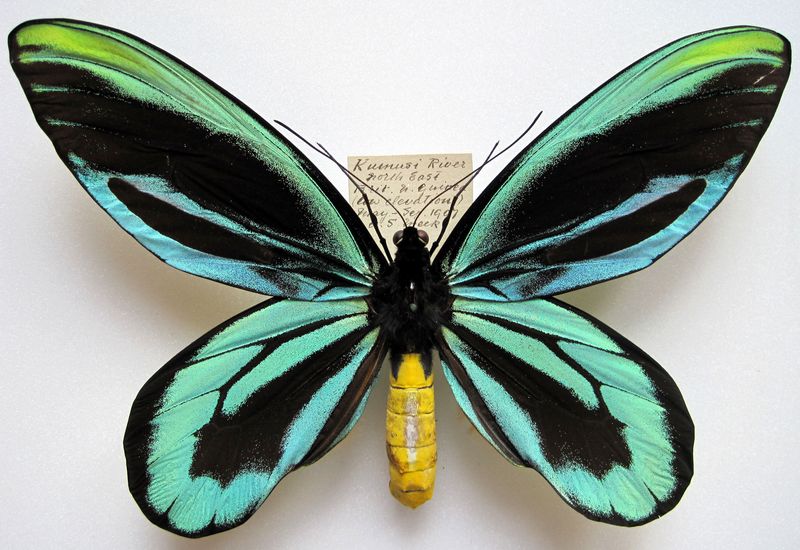
Queen Alexandra’s Birdwing is the largest butterfly in the world, with a wingspan that can reach up to 11 inches. Found in the rainforests of Papua New Guinea, this butterfly is a true giant among its peers.
Its bright green and black wings make it a breathtaking sight as it glides through the forest canopy. This butterfly’s size and beauty have made it a target for collectors, posing a threat to its survival. Conservation efforts focus on habitat protection and sustainable practices to curb illegal collection.
10. Blue Morpho
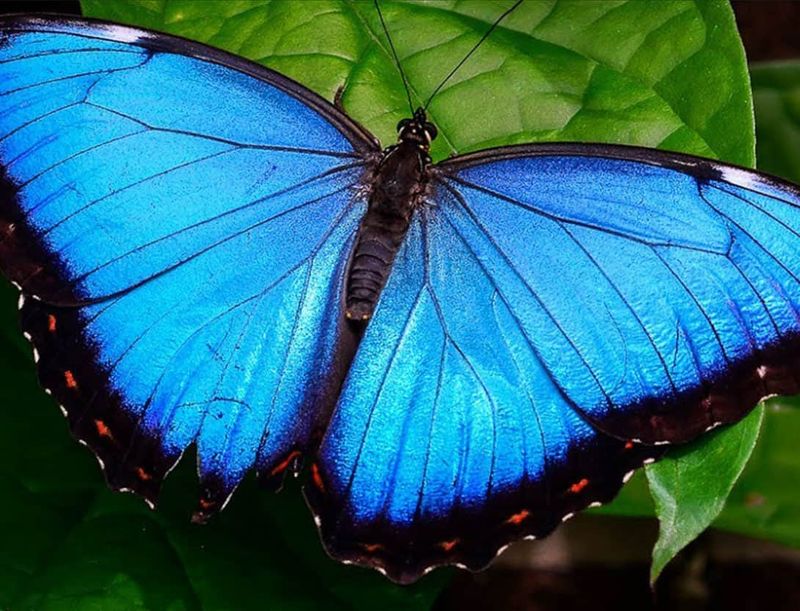
Found in the lush rainforests of Central and South America, it is a symbol of the tropical wilderness.
Its iridescent wings play a crucial role in mating displays and predator evasion. The Blue Morpho’s flight through the rainforest is a mesmerizing sight, as its wings catch the sunlight, creating flashes of blue.
This butterfly serves as an ambassador for the rainforest, highlighting the need to preserve these critical ecosystems. Observing the Blue Morpho in its natural habitat is a reminder of the beauty and complexity of the natural world.
11. Sri Lankan Ceylon Rose
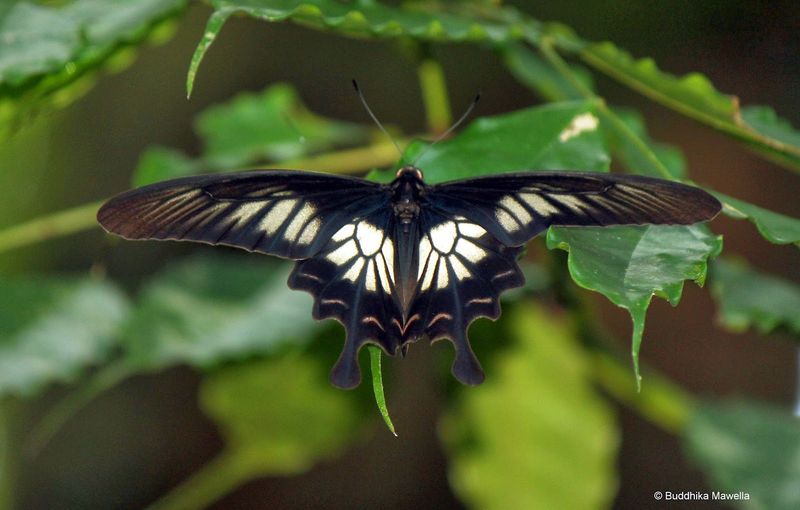
The Sri Lankan Ceylon Rose is a rare and delicate butterfly endemic to the island of Sri Lanka. Its elegant white and black wings resemble a delicate piece of art, fluttering through the tropical gardens and forests.
This butterfly’s beauty belies its resilience. Despite being threatened by habitat loss, it continues to thrive in protected areas. Conservationists are committed to preserving its habitat, ensuring the Ceylon Rose’s survival and the protection of Sri Lanka’s unique biodiversity.
12. Rajah Brooke’s Birdwing
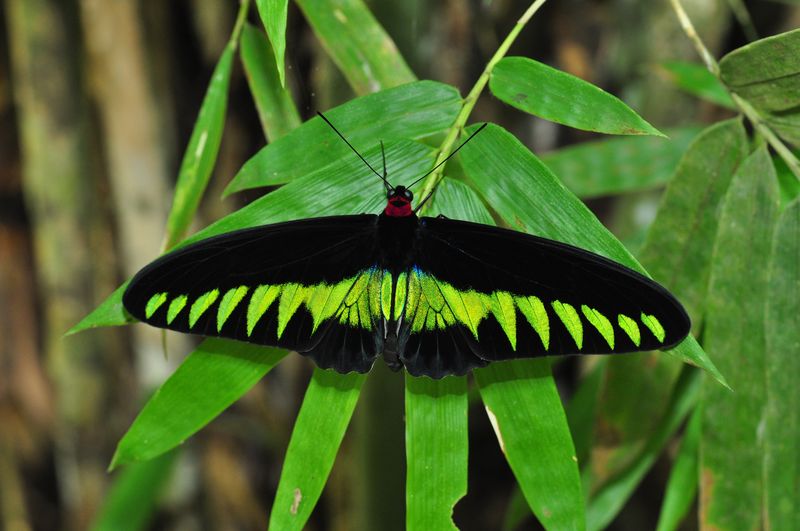
Rajah Brooke’s Birdwing is a spectacular butterfly native to the rainforests of Borneo and other parts of Southeast Asia. With its emerald green and black wings, it is a visual delight and a favorite among butterfly enthusiasts.
Named after a British explorer, this butterfly is often seen near riverbanks and forest edges. Its presence is an indicator of a healthy ecosystem, as it relies on specific host plants for its larvae.

